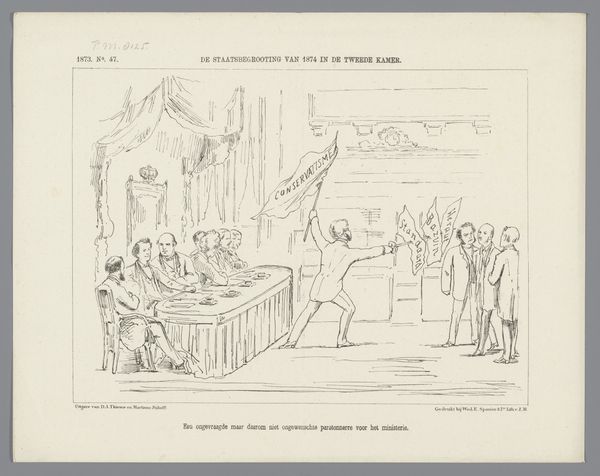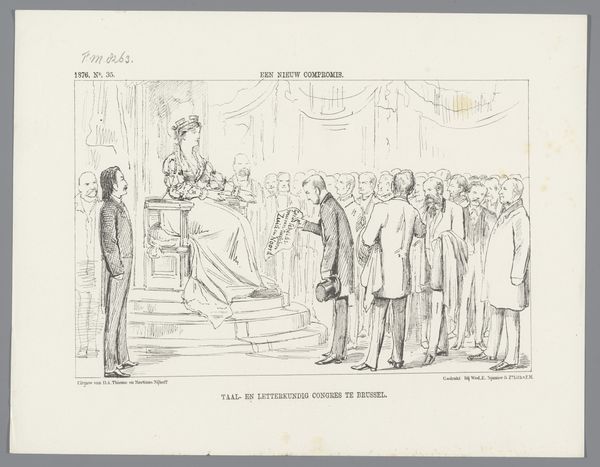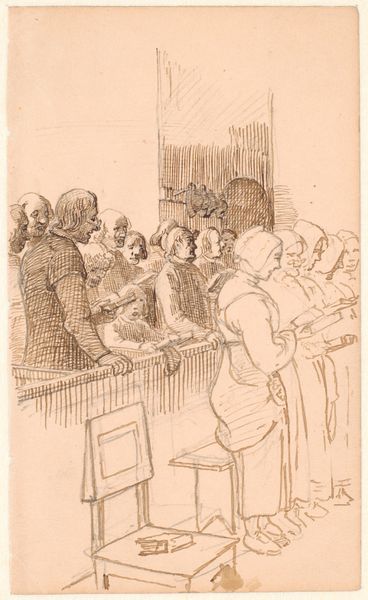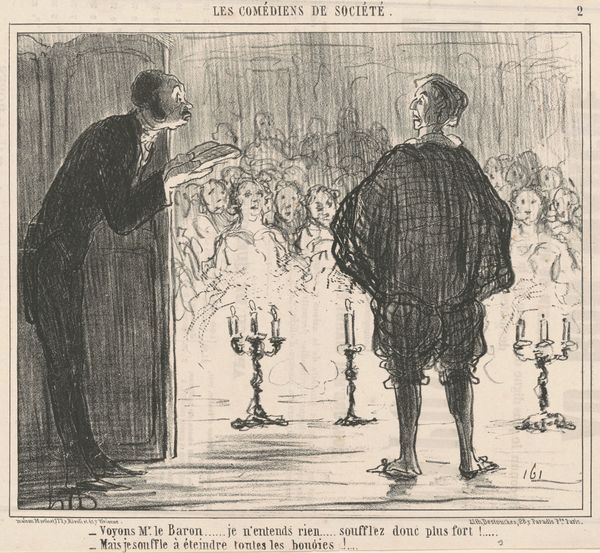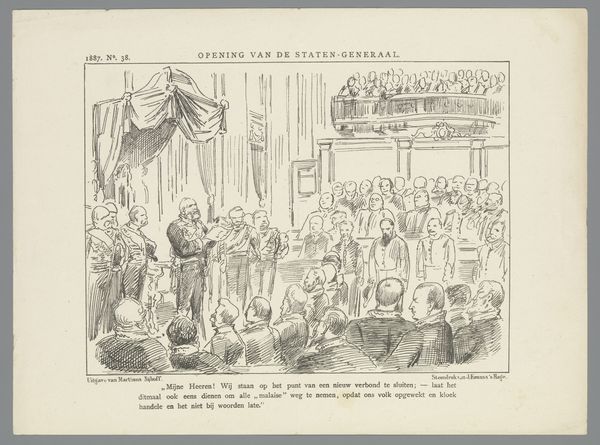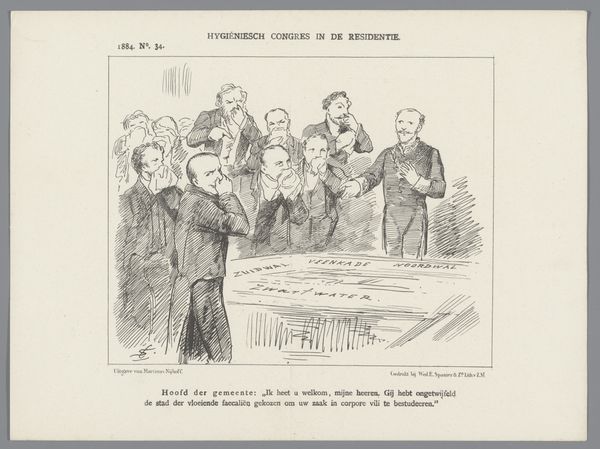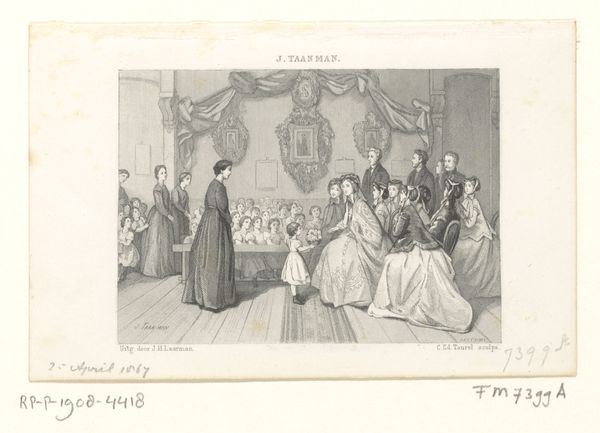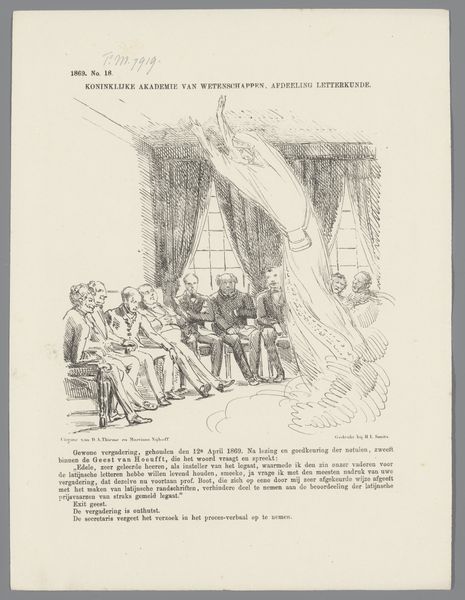
Spotprent over de behandeling van de Agrarische wet in de Eerste Kamer, 1870 1870
0:00
0:00
drawing, print, ink
#
drawing
#
comic strip sketch
#
narrative-art
# print
#
caricature
#
ink
Dimensions: height 215 mm, width 275 mm
Copyright: Rijks Museum: Open Domain
Curator: Here we have a piece titled "Spotprent over de behandeling van de Agrarische wet in de Eerste Kamer, 1870," a drawing by Johan Michaël Schmidt Crans from the year 1870. It's rendered in ink, likely for a print. Editor: My first impression is that the figure seems staged—there’s a theatrical element that sets the mood for social critique, doesn’t it? Curator: Absolutely. It satirizes the Conservative Party's handling of agricultural laws in the Dutch Senate. The setting within the “Eerste Kamer” suggests a political theater. Editor: I'm fascinated by the deliberate use of drawing here. The lines are spare yet expressive, conveying texture, form, and a sense of movement with incredible efficiency. Ink lends itself beautifully to reproduction, speaking volumes about the artist's intent and production goals. Curator: Right, and consider the tradition of caricature during that time. Publications used these types of works to sway public opinion. The scale probably played into how widely this was disseminated and consumed. Editor: It's clear the artist engaged closely with materials accessible to a mass audience. But consider the craftsmanship, it challenges our typical notions of high and low art, doesn't it? It speaks to labor, mass culture, and artistic purpose beyond just aesthetics. Curator: It’s more than just aesthetically pleasing; it’s about social commentary. The artist critiques those in power and, importantly, makes that critique accessible to a wider audience. It shows how societal conditions shape the work. Editor: Yes! It underscores the importance of materials and labor in conveying cultural messages. In short, a deeper consideration for how this print was made adds a significant layer of richness to understanding its message. Curator: A fitting lens to examine not just the what, but the how and why of visual communication, wouldn’t you agree? Editor: Indubitably. Understanding the material and social underpinnings allows us to truly decipher its continuing value.
Comments
No comments
Be the first to comment and join the conversation on the ultimate creative platform.
